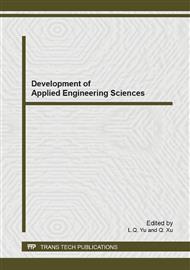p.393
p.398
p.404
p.411
p.416
p.422
p.428
p.435
p.440
A Fast Target Searching and Capturing Method for Phased Array Radar
Abstract:
Phased array radar (PAR) used for space exploration is a potential technique in many fields such as space target detection, tracking and orbit determination. Nevertheless, it may take a long time for PAR to detect fast-moving targets due to the large searching scope. This paper introduces the compressive sensing (CS) theory used in phased array tracking radar. A fast target searching method and angle-range imaging algorithm based on CS theory are presented, which can reduce the scanning time, sampling and processing data storage. The results of numerical simulation indicate that the proposed method using fewer scanning times can retain almost equal imaging and resolution quality compared to conventional method, which can also ensure the signal-to-noise ratio (SNR) of target detection.
Info:
Periodical:
Pages:
416-421
Citation:
Online since:
October 2014
Authors:
Price:
Сopyright:
© 2014 Trans Tech Publications Ltd. All Rights Reserved
Share:
Citation:


